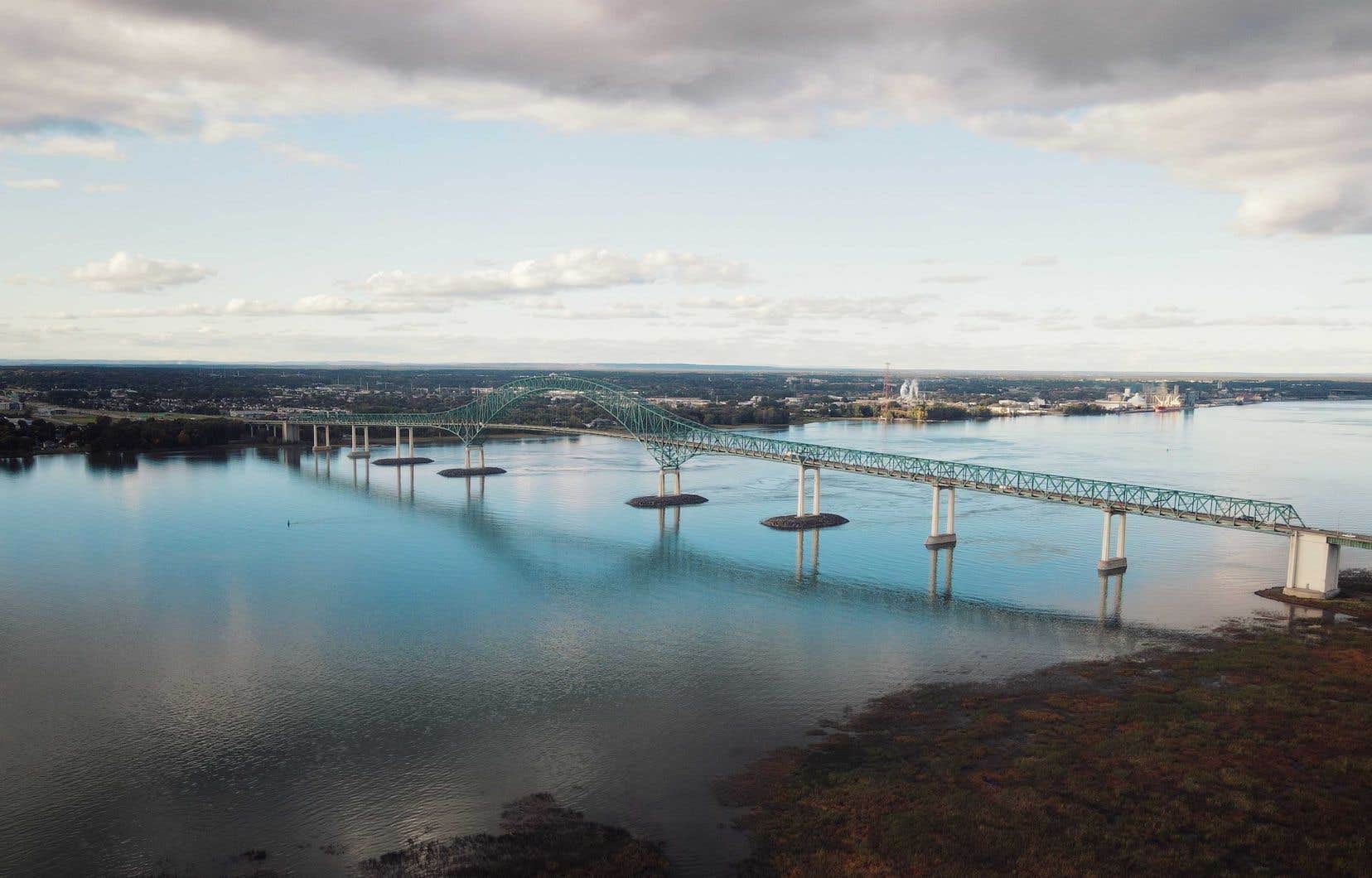The fatal collapse of a bridge in Baltimore in the middle of the night on Tuesday caused international turmoil. In Quebec, experts are taking stock of the risks facing the province, which is faced with the aging of its bridges. State of play.
Why did the Francis Scott Key Freeway Bridge in Baltimore collapse so quickly?
Completed in 1977, this bridge over time became a major road infrastructure in Baltimore, Maryland. Its traffic, in recent years, has reached 34,000 vehicles per day. Around 1:30 a.m. on Tuesday, however, this 2.6 km infrastructure collapsed in a few seconds after a 300-meter boat having deviated from its trajectory hit one of its pillars. Eight people were on the bridge at the time of this collision, six of whom were missing on Tuesday.
The Francis Scott Key Highway Bridge in Baltimore, Maryland, was destroyed following a collision with a container ship, carrying an unknown number of workers and motorists into the Patapsco River. pic.twitter.com/k9YcnoOeRW
— Frédéric Arnould (@FredericArnould) March 26, 2024
The full professor in the Department of Civil, Geological and Mining Engineering at Polytechnique Montréal, Bruno Massicotte, is however not surprised that this massive structure collapsed so quickly. “If you are on two legs apart and the support of one leg is taken away, you will fall,” he illustrates. Thus, the fact that this bridge collapsed into the Patapsco River in just a few seconds after its pillar was reached “is completely normal”, also analyzes Mario Fafard, who is a retired professor in the department of civil engineering and in water engineering from Laval University.
On the other hand, the very fact “that the ship makes it to the bridge, that’s what is surprising,” notes Mr. Massicotte. “This should never have happened,” continues the professor, who indicates that the pillars of this infrastructure should normally have been protected by circular equipment or piles of rock used to “absorb” the shock in the event of an accident. impact with a ship. “It is inconceivable” that a bridge would not be equipped with such infrastructure, believes Mr. Massicotte. He thus wonders whether the Francis Scott Key Bridge was built at a time when the authorities’ “risk tolerance” was greater. An answer to which the investigation which will follow this tragedy should be able to answer.
“In the United States, there is someone who will be criminally accused of this,” the expert already foresees.
Are the bridges in Quebec safe from such a tragedy?
In Quebec, the Laviolette Bridge, in Trois-Rivières, is designed in a model similar to the one that collapsed in Baltimore, with its arc shape and its pillars located in the St. Lawrence River, where freight boats circulate . Islands of rock are, however, clearly visible at the base of the pillars of this bridge inaugurated in 1967, where repair work is also planned as part of Quebec’s budgetary planning.
“It is important to reassure the population: a similar event could not happen again in Quebec,” the office of Quebec Transport Minister Geneviève Guilbault assured in writing on Tuesday. He thus indicated on Tuesday that “the structures of our bridges are protected by riprap or are outside the maritime lanes” in order to make them resistant to possible collisions with ships.
“In Quebec, our bridges on waterways are protected against this type of impact,” Mario Fafard also confirms. “We did our job properly against the protection of a ship impact. »
What is the state of bridges in Quebec, which are aging?
In recent years, the proportion of structures in the upper road network in good condition under the responsibility of the Ministry of Transport of Quebec (MTQ), including several major bridges, has remained stable. 78% of these infrastructures are considered to be in good condition, while 22% are in poor condition. However, the longer we wait to upgrade or ensure preventive maintenance of bridges, the more they risk deteriorating quickly, underline the experts joined by The duty. The bridge asset maintenance deficit in Quebec is also growing this year compared to last year, shows the latest provincial budget.
“We must not forget that what is good today will no longer be good in 10 years,” notes Bruno Massicotte, who says he is “worried” about the growing needs for bridge maintenance in Quebec. “We can always have a bad surprise,” warns the expert, who remembers well the collapse of the Concorde viaduct, which occurred in Laval in 2006. “We are really not as good as we should be. be. »
Moreover, 60% of the upper road infrastructure in Quebec was built between 1960 and 1980, according to data from the MTQ. “I think that the Quebec government should provide a contingency fund” when it creates road infrastructure, says Mario Fafard, who underlines the importance of not waiting until a bridge is in poor condition to carry out repair work on it. ‘interview. Otherwise, “we won’t get through this.”
